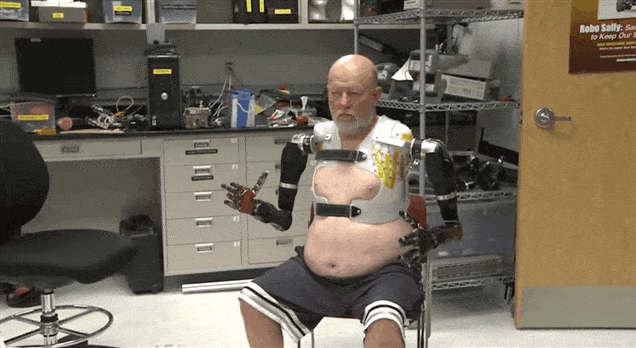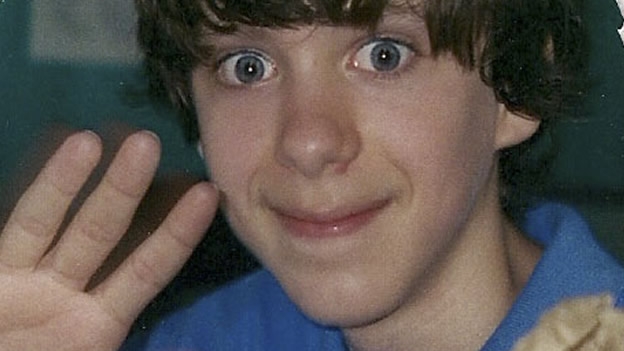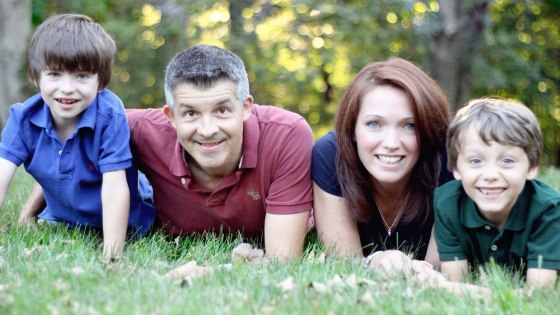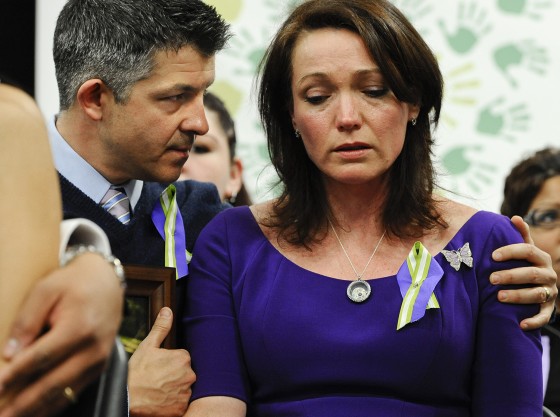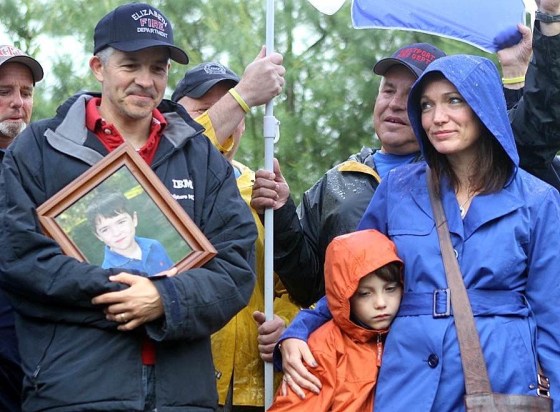The first thing you notice about the Mirai, Toyota’s new $62,000, four-door family sedan, is that it’s no Camry, an international symbol of bland conformity. First there are the in-your-face, angular grilles on the car’s front end. These deliver air to (and cool) a polymer fuel-cell stack under the hood. Then there’s the wavy, layered sides, meant to evoke a droplet of water. It looks like it was driven off the set of the Blade Runner sequel.
Just as the Prius has established itself as the first true mass-market hybrid, Toyota hopes the Mirai will one day become the first mass-market hydrogen car. On sale in Japan on Dec. 15, it will be available in the U.S. and Europe in late 2015 and has a driving range of 300 miles, much farther than most plug-in electrics can go. It also runs on the most abundant element in the universe and emits only heat and water—and none of the gases that lead to smog or contribute to global warming. “This is not an alternative to a gasoline vehicle,” says Scott Samuelsen, an engineer and director of the National Fuel Cell Research Center at the University of California at Irvine. “This is a quantum step up.”
The Mirai is hardly a speedster, though it’s quicker than a Prius. It can reach 100 kilometers (62 miles) per hour in 9.6 seconds. When you punch it, the car feels like an electric—there’s none of the vibration of a combustion engine. Driving the Mirai around a large, man-made island in Tokyo Bay called Odaiba is a little surreal. The interior is a Zen sanctuary of silence, save for the rush of wind passing around the vehicle and the occasional muffled sound of the suspension doing its work. The car can double as a mobile power station: A socket in the trunk can electrify the typical Japanese home for about a week in the event of an earthquake or other emergency.
As cool as the Mirai is, selling it is a hugely risky move. While fuel cells are a proven technology, used by NASA during Apollo missions in the 1960s to generate electricity and produce drinking water, a mass market for fuel-cell cars will require big investments in hydrogen fueling stations that may not be forthcoming. And, thanks in large part to Toyota itself, the auto industry has sunk serious money into hybrids, plug-in electrics, and advanced batteries in the expectation that these technologies will dominate the post-gasoline era, whenever that may be. “Every manufacturer has multiple hybrids and electrics coming,” says Mike Jackson, chief executive officer of AutoNation(AN), the largest U.S. retailer of new cars, trucks, and SUVs. “And here you have Toyota saying, ‘We’re not going to go full electric. The ultimate answer is fuel cells.’ ” Volkswagen (VOW:GR) CEO Martin Winterkorn, Nissan Motor boss Carlos Ghosn, and Tesla Motors (TSLA) founder Elon Musk all question the economic viability, environmental credentials, and safety of Toyota’s fuel cells. One could also ask why Toyota, which does well with its hybrids and plug-in electrics, is bothering with a commercially unproven technology that may undermine a core franchise. Akio Toyoda, Toyota Motor’s (TM) president and the scion of the automaker’s founding family, says there’s room for both plug-in electrics and hydrogen cars; he dismisses doubters. “Fifteen years ago they said the same thing about the Prius,” he says. “Since then, if you consider all [our] hybrid brands, we have sold 7 million of them.” “We had a kind of feeling that ‘We could do it with the hybrid, why not the fuel-cell vehicle?’”
Toyoda leads one of the most finely tuned capitalist enterprises in history. The company is on course to earn a record $18.2 billion this year—more than the combined projected profits of Ford Motor (F),General Motors (GM), and Honda Motor (HMC). But Toyoda doesn’t just want to sell cars. He wants to save the planet. “The automobile industry can contribute to the sustainable growth of earth itself,” he says, without a trace of irony. “At Toyota, we are looking out 50 years and even more decades into the future. I do believe that [the] fuel-cell vehicle is the ultimate environmentally friendly car. But the point is not just to introduce it as an eco-friendly car with good mileage. I wanted it to be fun to drive and interesting as a car.”
At 58, Toyoda is owlish, wears stylish, rectangular eyewear, and is fond of such concepts as smart mobility and sustainable growth. He speaks English pretty well and has a deep, raspy, and ready laugh. He almost always carries stickers in his suit pockets of Morizo, his cartoon alter ego, which he eagerly hands out. And he regularly suits up in tailor-made Nomex fireproof, red-and-white racing gear to drive souped-up Toyota rally cars at speedways around the world. Judging by his YouTube videos, he’s on a quest to achieve the perfect “Tokyo drift.” That’s a racing maneuver pioneered in Japan involving an interplay of gear shifts, braking, and oversteering to intentionally cause a car’s rear wheels to lose traction with a track’s surface in high-speed turns. As the grandson of founder Kiichiro Toyoda, Akio’s elevation to the top job in 2009 was nothing short of the restoration of the Toyoda clan. The last family member to run the company, Tatsuro Toyoda, gave up control in 1995 after being waylaid by a stroke.
The burden of the Toyoda family’s legacy in a recession-prone Japan can be a heavy one. Despite record profits the last two years, Toyota faces challenges. China may be the fastest-growing car market in the world, but it’s a tough market for Japanese automakers given the toxic political climate between the two countries. Toyota and other automakers have recalled millions of vehicles this year to address air bag problems at Japanese supplier Takata.
Nor has Toyoda had an easy time establishing his credibility in a hierarchical and consensus-driven culture in which corporate elders, not young mavericks, are prized. “There was a civil war internally,” says John Casesa, senior managing director of investment banking at Guggenheim Partners and a former auto analyst. “Akio was not only not part of the professional management team, but he was a member of the family that’s a whole generation younger. He had a lot of the top of the institution stacked against him.”
Toyoda says he often channels inspiration from Kiichiro in quiet moments before the family butsudan, or Buddhist altar, at his home outside Nagoya. “My grandfather was 57 when he passed away, and I’m 58 right now,” he says. “I haven’t found the answer of what my role should be, so I ask him to please use my body to create the company that he wanted.”
Just outside Nagoya, in Toyota City, where company headquarters are based, the automaker has created a community of smart homes equipped with solar cells and energy storage devices that can allow plug-in vehicles to power the dwellings in emergencies. Residents can monitor their energy usage on tablet PCs and pay lower rates as a reward for conservation and off-peak usage.
![The Mirai’s profile resembles a droplet of water.]() Photographer: Jeremy LiebmanThe Mirai’s profile resembles a droplet of water.
Photographer: Jeremy LiebmanThe Mirai’s profile resembles a droplet of water.Two other demonstration projects, one also in Toyota City and the other in Grenoble, France, suggest what the clean city of tomorrow might look like: ultracompact, electric vehicles for inner-city commutes that are networked to an intelligent traffic system. The more wirelessly connected trucks, cars, and buses there are, the greater the ability of software algorithms to reroute traffic, easing congestion and improving safety.
However gauzy and utopian these ideas might seem, there’s a business rationale behind them. The auto industry’s fast and furious expansion in recent decades may be, in many parts of the world, a spent force. Personal mobility is a wonderful thing, even crucial. Yet if you’re a commuter in Mumbai, where 12.5 million people are packed into about 230 square miles and six-hour traffic jams aren’t unheard of, driving to work is nuts. Only 14 percent of commutes there are by personal car, and more than half of all workers take the train, according to a report by Mumbai Railway Vikas. China, one of the last fast-growing frontiers of auto industry expansion, is an ecological wasteland. In the vehicle-saturated, rich countries, Uber’s ride-booking service and car-sharing companies such as Zipcar(CAR) offer alternatives to car ownership for a generation of younger urban commuters turned off by the expense of owning a car or concerned about the environment. “If I put myself in Elon’s shoes, I’d be doing the same thing. He’s got his eggs in the electric vehicle basket.”
Cars, trucks, and other forms of transportation generate about 22 percent of the world’s greenhouse gas emissions, the International Energy Agency estimates. Auto accidents each year take a huge number of lives—some 1.2 million in 2013, according to the World Health Organization. So what happens when the number of cars and vehicles on the world’s roads more than doubles, from 900 million now (excluding two- and three-wheelers) to 2 billion by 2050, as the IEA forecasts?
Toyoda sees the evolution of the car as nowhere near finished. By the time hydrogen rivals fossil fuels, he envisions even more dynamic radar systems, high-resolution lasers, and predictive data systems reducing traffic fatalities. Above all, he sees the fuel-cell car as the catalyst, as he puts it, in the “creation of a hydrogen society.”
Toyota started its fuel-cell development in 1992, roughly the same time it began its work on the Prius gas-electric hybrid engine. By 2008, executives were keenly aware that Daimler (DAI:GR), Honda, and Hyundai Motor were also quickly moving forward with hydrogen car projects. Toyota Chairman Takeshi Uchiyamada, the driving force behind the Prius, decided to move the car out of development and into mass production that year. At the time, however, the cost of manufacturing a fuel-cell car was “close to $1 million per vehicle,” says Satoshi Ogiso, Toyota’s managing officer in charge of product development and chassis engineering. The inability of fuel-cell developers to reduce costs was a big reason why the technology never took off in the 1990s and early 2000s, despite best-selling books such as The Hydrogen Economy by futurist Jeremy Rifkin. A number of car companies began developing fuel-cell vehicles, from Honda’s FCX to GM’s Sequel, but high production costs, plus battery technology advancements, swayed momentum to electric vehicles. Toyota says it made the Mirai economically viable by reengineering the fuel-cell stack with less expensive materials, reducing the amount of platinum in the catalyst that separates hydrogen protons from electrons (electricity), and standardizing the production equipment to make the car. Toyota’s earlier work with the Prius’s power electronics and batteries also gave it an edge, says Ogiso: “We had a kind of feeling that ‘We could do it with the hybrid, why not the fuel-cell vehicle?’ ”
Toyota’s fuel-cell launch is getting plenty of government help in Japan, where some early adopters will be eligible for a 2.75 million yen ($23,754) subsidy. In the U.S., Toyota will charge $57,500 for the Mirai. Federal and state incentives could reduce the price as much as $13,000, and Toyota plans to provide free fuel to early buyers. Customers can also lease the car for three years, at $499 a month.
![]()
The Mirai’s hydrogen tank can be refilled in less than five minutes via a large hose that pumps supercooled hydrogen into the car’s pressurized tanks. In California there are 13 research hydrogen-fueling stations, 9 public stations, and an additional 18 that have been funded and are expected to be operational in the next few years. Yet it will take a far bigger build-out to give the market for hydrogen cars a chance to develop. “Its infrastructure is constrained much more than electric vehicles, where you can charge them at home,” says Dan Sperling, director of the Institute of Transportation Studies at the University of California at Davis.
One of the Mirai’s most acerbic critics is Tesla founder Musk, who sees the post-gasoline world dominated by pure electric vehicles—preferably Tesla models powered by lithium-ion battery packs. More than four years ago, Musk invited Toyoda to his California home and let him take the company’s Roadster sports car out for a spin. It was quite a bromance. Within weeks, Toyota agreed to buy a $50 million stake in Tesla and sold a shuttered California factory to its new partner for a mere $42 million.
The two agreed to make an electric Toyota RAV4 and considered extending the collaboration to retrofit the Lexus RX SUV. The RAV4 EV flopped after Toyota slapped it with a sticker price of almost $50,000—almost double the gasoline version—and limited its availability to residents of California. The bigger issue was that Toyota embraced “fool cells,” as Musk dismissively calls them.
During a news conference in Tokyo following a Tesla event in September, Musk delivered an unforgiving takedown of hydrogen cars. Currently, 95 percent of U.S. hydrogen production is made from heating up natural gas, a process that produces greenhouse emissions. Fuel-cell vehicles such as the Mirai, Musk said, are “hydrocarbon-burning cars in disguise.” While EVs take hours to recharge, the fueling cost is a fraction of the roughly $45 a hydrogen fill-up will cost. Musk also noted that hydrogen, while well-suited to the rocket business, is “highly volatile and can have explosive consequences.”
Easing the minds of consumers familiar with the 1937 Hindenburg disaster will take some effort. Toyota engineered its hydrogen tanks with a three-layer structure of carbon-fiber-reinforced plastic and other materials that can withstand not only the usual crash dummy collision tests but also a bullet fired at close range. In the event of a leak, special sensors can shut off the hydrogen flow.
![Electric vehicles could power Toyota smart homes in a blackout.]() Photographer: Jeremy LiebmanElectric vehicles could power Toyota smart homes in a blackout.
Photographer: Jeremy LiebmanElectric vehicles could power Toyota smart homes in a blackout.Musk’s comments have drawn return fire from Toyota North America CEO James Lentz. “If I put myself in Elon’s shoes, I’d be doing the same thing. He’s got his eggs in the electric vehicle basket,” he says. “There are drawbacks to EVs in the marketplace. Customers have range anxiety. There’s the length of time it takes to recharge.”
Musk and others have a point about one thing: The environmental benefit of fuel-cell cars won’t be fully realized if hydrogen isn’t eventually produced from renewable sources. Splitting water into hydrogen and oxygen using electricity, a process called electrolysis, from a renewable source such as solar is one option. Another is biomass conversion, the biochemical conversion of methane gas, say, from landfills into hydrogen. “There’s a high possibility that there will be many sources of hydrogen in the future, such as solar energy and even waste,” says Toyoda. Yet whether these methods will ever be cost-competitive with gasoline and diesel is unclear.
Every fall, Toyota’s top executives retreat to the towering pines and white stone courtyards of the Ise Grand Shrine on the Pacific Coast, about a four-hour train ride south of Tokyo. There, the company shows off its newest domestic models, and everyone pays homage to the Shinto sun goddess Amaterasu. This company loves its traditions, one of which is never to publicly criticize corporate elders.
Such restraint wasn’t shown in one of his first media appearances as president, where Toyoda sounded a little like a Greenpeace activist when he said that his company had fallen prey to “the hubris of success” and the “undisciplined pursuit of more.” That didn’t reflect well on his three nonfamily immediate predecessors—Hiroshi Okuda, Fujio Cho, and Katsuaki Watanabe.
That was in October 2009, when the industry was reeling from the financial crisis and five months after Toyota had reported a 5.5 billion yen loss. The company also became the target of U.S. regulatory scrutiny after multiple deaths were attributed to accidents involving unintended acceleration of its cars, leading to the eventual recall of 10 million vehicles over two years.
When Toyoda made an emotional apology before Congress in February 2010, he placed partial blame for the recall crisis on Toyota’s aggressive growth during the previous decade. Yet a quality review, ordered up by Toyota and led by American safety experts, concluded the problems ran deeper. The company’s slow response to acceleration problems dating back to 2002 owed much to its insularity, even arrogance. The internal review noted that Toyota was slow to respond to feedback from outside, including customers. In March, Toyota paid a $1.2 billion penalty to settle a U.S. government criminal probe into safety issues at the company.
![]() Photographer: Jeremy Liebman
Photographer: Jeremy LiebmanToyoda struggled in the early stages of the crisis. “I have never seen Akio so sick; his face was white, and he was getting fat,” recalls Javier Quirós, Toyoda’s roommate at Babson College during the 1980s and president of Purdy Motor, a Toyota distributor in Costa Rica. “His grandfather and his father’s work was falling into a cascade, and he didn’t know what to do.” Auto industry consultant and author Maryann Keller believes the recall crisis was transformative for Toyoda. “Those are humbling experiences for somebody who wasn’t previously humbled,” she says. “That was a pivotal time that did change him.”
After years of emphasizing faster development cycles to revamp its lineup with freshly redesigned models, Toyoda tacked on four weeks of work to shore up the reliability and safety of each new car. The company named chief quality officers for North America and other regions, all of whom have direct lines to Toyoda. It also became one of the first full-line vehicle makers to make an advanced brake override system standard on new models. Toyoda has a moratorium on new assembly plants until 2016.
He took some criticism internally when he urged executives to return to basics and pull back from the breakneck plant and product expansions of the previous decade, according to Shigeki Tomoyama, a managing officer in charge of business development and IT. Given the company’s sales-driven culture, that was kind of like placing Godzilla on a vegan diet. “Only Toyoda could say that,” says Tomoyama. “He is from the family, so he’s allowed to talk about the longer term.” Toyoda is open about the second-guessing he sometimes gets from the company’s old guard. “The past presidents that I have spoken with say that I don’t understand my responsibility,” he says with a smile. “I believe that I’m aware and that I understand.”
Toyoda’s most immediate adversary may be prosperity. The automaker’s $210 billion market value is greater than that of Ford, GM, Honda, and Nissan combined—and eight times that of Tesla. The Toyota Camry is the best-selling car in America, and the revived Lexus brand and Toyota lineup finished No. 1 and No. 2 for the second straight year in the annual Consumer Reports quality survey of the U.S. new-vehicle market.
Toyoda could well run the company for roughly another decade. By then the world will get a better sense of whether his legacy play of fuel-cell vehicles and new forms of mobility has a realistic shot. It’s a world that his grandfather, Kiichiro, could scarcely have imagined. Yet one way or another, Toyota’s hydrogen car embrace will probably inform how Akio is remembered 30 years from now.




























